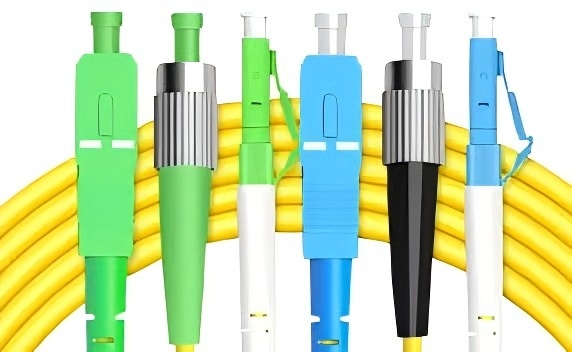Optical patch cords, also known as fiber optic jumpers, are indispensable in linking optical devices and ensuring efficient data transmission. They come in various types, each tailored for specific applications and requirements. In this article, we will explore the different types of optical patch cords, how to identify them, and practical tips for selecting the right one for your setup.

What Are Optical Patch Cords?
Optical Patch Cords are short-length fiber optic cables terminated with connectors on both ends. They are used to interconnect optical equipment such as transceivers, patch panels, and distribution boxes. The primary function of these cables is to facilitate low-loss, high-speed data transfer between devices in telecommunications, data centers, and industrial settings.
Common Types of Optical Patch Cords
Simplex And Duplex
- Simplex Patch Cords: These contain a single optical fiber and are ideal for one-way communication systems like transmit-only or receive-only applications.
- Duplex Patch Cords: These feature two optical fibers and are suitable for two-way communication, commonly used in high-speed networks.
Connector Types
Optical Patch Cords can have various connector combinations. The most common are:
- LC to LC: Compact connectors often used in high-density environments like data centers.
- SC to SC: Reliable and robust connectors commonly found in telecommunication networks.
- ST to ST: Rugged connectors, ideal for industrial and military applications.
- Hybrid Patch Cords: These combine different connectors on each end, such as LC to SC or LC to ST, offering versatility in connectivity.
Cable Types
- Single-Mode Patch Cords: Use a single optical fiber for long-distance communication with minimal signal loss.
- Multimode Patch Cords: Contain multiple optical fibers, suitable for short-distance applications like LANs and data centers.
Armored and Non-Armored
- Armored Patch Cords: Provide extra protection against physical damage, ideal for rugged environments.
- Non-Armored Patch Cords: Lightweight and flexible, suitable for indoor use.
How to Identify Optical Patch Cords Types
- Check the Connectors: Examine the connectors to determine the type. For example, LC connectors are compact with a snap-in design, while SC connectors are bulkier with a push-pull mechanism.
- Inspect the Cable Markings: Most optical cables have specifications printed on the sheath, including fiber type (single-mode or multimode), diameter, and application standards.
- Examine the Cable Construction: Armored cables often have a metallic layer or additional protective sheath. Simplex cables will have one fiber, while duplex cables have two.
- Understand the Color Code: Single-mode cables are typically yellow, while multimode cables are usually orange (OM1/OM2) or aqua (OM3/OM4).
How to Choose the Right Optical Patch Cord
- Understand Your Application Needs: For long-distance communication or outdoor applications, single-mode patch cords are ideal. For short-distance, high-speed data transmission, multimode patch cords are the better choice.
- Consider the Environment: Use armored patch cords in harsh environments to protect against physical damage. Non-armored patch cords are more suitable for controlled, indoor environments.
- Connector Compatibility: Ensure the connectors match your existing equipment. For example, LC connectors work well with high-density panels, while SC connectors are better for legacy systems.
- Match Transmission Speed and Distance: For 10Gbps speeds or more, consider OM3 or OM4 multimode patch cords. For distances exceeding 500 meters, single-mode cables are necessary.
Common Applications of Optical Patch Cords
- Data Centers: Optical patch cords connect switches, servers, and storage devices, ensuring seamless high-speed data transfer.
- Telecommunications: Used to link equipment in central offices, access networks, and long-haul communication systems.
- Industrial and Military Use: Armored patch cords provide the durability needed for harsh conditions in factories or field operations.
- FTTx Networks: Fiber patch cords enable last-mile connections to homes and businesses in fiber-to-the-x installations.
Conclusion
Optical patch cords are vital components of any fiber optic network. By understanding their types, characteristics, and applications, you can make an informed choice that ensures optimal performance and reliability. Whether you need simplex or duplex, single-mode or multimode, armored or non-armored cables, Fiber-Life offers a comprehensive range of high-quality optical patch cords tailored to your needs. Contact us today to find the perfect solution for your network!










